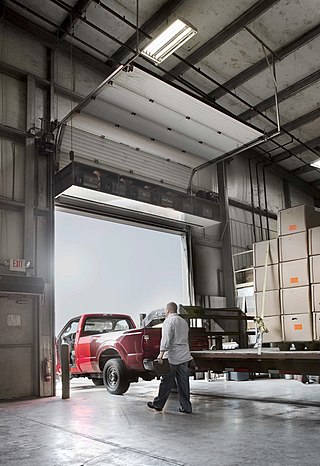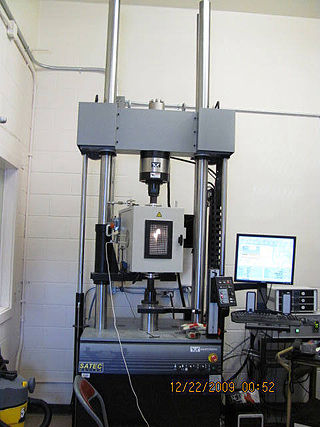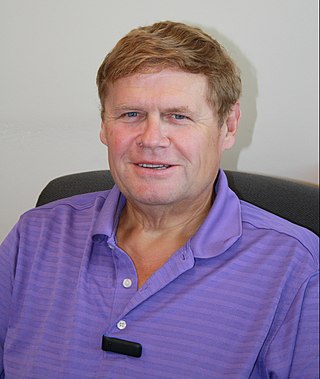
Heating, ventilation, and air conditioning (HVAC) is the use of various technologies to control the temperature, humidity, and purity of the air in an enclosed space. Its goal is to provide thermal comfort and acceptable indoor air quality. HVAC system design is a subdiscipline of mechanical engineering, based on the principles of thermodynamics, fluid mechanics, and heat transfer. "Refrigeration" is sometimes added to the field's abbreviation as HVAC&R or HVACR, or "ventilation" is dropped, as in HACR.

Colloquially, room temperature is a range of air temperatures that most people prefer for indoor settings. These temperatures feel comfortable to people wearing typical indoor clothing. Human comfort can extend beyond this range depending on humidity, air circulation and other factors.

Ventilation is the intentional introduction of outdoor air into a space. Ventilation is mainly used to control indoor air quality by diluting and displacing indoor pollutants; it can also be used to control indoor temperature, humidity, and air motion to benefit thermal comfort, satisfaction with other aspects of the indoor environment, or other objectives.
Operative temperature is defined as a uniform temperature of an imaginary black enclosure in which an occupant would exchange the same amount of heat by radiation plus convection as in the actual nonuniform environment. Some references also use the terms 'equivalent temperature" or 'effective temperature' to describe combined effects of convective and radiant heat transfer. In design, operative temperature can be defined as the average of the mean radiant and ambient air temperatures, weighted by their respective heat transfer coefficients. The instrument used for assessing environmental thermal comfort in terms of operative temperature is called a eupatheoscope and was invented by A. F. Dufton in 1929. Mathematically, operative temperature can be shown as;

An air door or air curtain is a device used to prevent air, contaminants, or flying insects from moving from one open space to another. The most common implementation is a downward-facing blower fan mounted over an entrance to a building, or over an opening between two spaces conditioned at different temperatures.

Building science is the science and technology-driven collection of knowledge in order to provide better indoor environmental quality (IEQ), energy-efficient built environments, and occupant comfort and satisfaction. Building physics, architectural science, and applied physics are terms used for the knowledge domain that overlaps with building science. In building science, the methods used in natural and hard sciences are widely applied, which may include controlled and quasi-experiments, randomized control, physical measurements, remote sensing, and simulations. On the other hand, methods from social and soft sciences, such as case study, interviews & focus group, observational method, surveys, and experience sampling, are also widely used in building science to understand occupant satisfaction, comfort, and experiences by acquiring qualitative data. One of the recent trends in building science is a combination of the two different methods. For instance, it is widely known that occupants' thermal sensation and comfort may vary depending on their sex, age, emotion, experiences, etc. even in the same indoor environment. Despite the advancement in data extraction and collection technology in building science, objective measurements alone can hardly represent occupants' state of mind such as comfort and preference. Therefore, researchers are trying to measure both physical contexts and understand human responses to figure out complex interrelationships.

Underfloor heating and cooling is a form of central heating and cooling that achieves indoor climate control for thermal comfort using hydronic or electrical heating elements embedded in a floor. Heating is achieved by conduction, radiation and convection. Use of underfloor heating dates back to the Neoglacial and Neolithic periods.

The Center for the Built Environment (CBE) is a research center at the University of California, Berkeley. CBE's mission is to improve the environmental quality and energy efficiency of buildings by providing timely, unbiased information on building technologies and design techniques. CBE's work is supported by a consortium of building industry leaders, including manufacturers, building owners, contractors, architects, engineers, utilities, and government agencies. The CBE also maintains an online newsletter of the center's latest activities called Centerline.
Thermal comfort is the condition of mind that expresses satisfaction with the thermal environment and is assessed by subjective evaluation. The human body can be viewed as a heat engine where food is the input energy. The human body will release excess heat into the environment, so the body can continue to operate. The heat transfer is proportional to temperature difference. In cold environments, the body loses more heat to the environment and in hot environments the body does not release enough heat. Both the hot and cold scenarios lead to discomfort. Maintaining this standard of thermal comfort for occupants of buildings or other enclosures is one of the important goals of HVAC design engineers.

Passive ventilation is the process of supplying air to and removing air from an indoor space without using mechanical systems. It refers to the flow of external air to an indoor space as a result of pressure differences arising from natural forces.
Bioenvironmental Engineers (BEEs) within the United States Air Force (USAF) blend the understanding of fundamental engineering principles with a broad preventive medicine mission to identify, evaluate and recommend controls for hazards that could harm USAF Airmen, employees, and their families. The information from these evaluations help BEEs design control measures and make recommendations that prevent illness and injury across multiple specialty areas, to include: Occupational Health, Environmental Health, Radiation Safety, and Emergency Response. BEEs are provided both initial and advanced instruction at the United States Air Force School of Aerospace Medicine at Wright-Patterson Air Force Base in Dayton, Ohio.
The ASHRAE Handbook is the four-volume flagship publication of the nonprofit technical organization ASHRAE. This Handbook is considered the most comprehensive and authoritative repository of practical knowledge on the various topics that form the field of heating, ventilation, air-conditioning, and refrigeration (HVAC&R).

A high-volume low-speed (HVLS) fan is a type of mechanical fan greater than 7 feet (2.1 m) in diameter. HVLS fans are generally ceiling fans although some are pole mounted. HVLS fans move slowly and distribute large amounts of air at low rotational speed– hence the name "high volume, low speed."

Ralph G. Nevins was an American professor of mechanical engineering and Chair of the Mechanical Engineering Department and Dean of the College of Engineering at Kansas State University, Manhattan, Kansas.
Clothing insulation is the thermal insulation provided by clothing.

Human factors and ergonomics is the application of psychological and physiological principles to the engineering and design of products, processes, and systems. Primary goals of human factors engineering are to reduce human error, increase productivity and system availability, and enhance safety, health and comfort with a specific focus on the interaction between the human and equipment.
ANSI/ASHRAE Standard 55: Thermal Environmental Conditions for Human Occupancy is an American National Standard published by ASHRAE that establishes the ranges of indoor environmental conditions to achieve acceptable thermal comfort for occupants of buildings. It was first published in 1966, and since 2004 has been updated every three to six years. The most recent version of the standard was published in 2023.

The Indoor Environmental Quality Global Alliance (IEQ-GA) was initiated in 2014 aiming to improve the actual, delivered indoor environmental quality in buildings through coordination, education, outreach and advocacy. The alliance works to supply information, guidelines and knowledge on the indoor environmental quality (IEQ) in buildings and workplaces, and to provide occupants in buildings and workplaces with an acceptable indoor environmental quality and help promote implementation in practice of knowledge from research on the field.

Peter Adrian Hancock is a British-American scientist of human factors and ergonomics, author, and expert witness. He is a Provost Distinguished Research Professor in the Department of Psychology and the Institute for Simulation and Training, as well as the Department of Civil and Environmental Engineering and the Department of Industrial Engineering and Management Systems at the University of Central Florida. He is the research director of the Minds in Technology−Machines in Thought research laboratory at the University of Central Florida.












